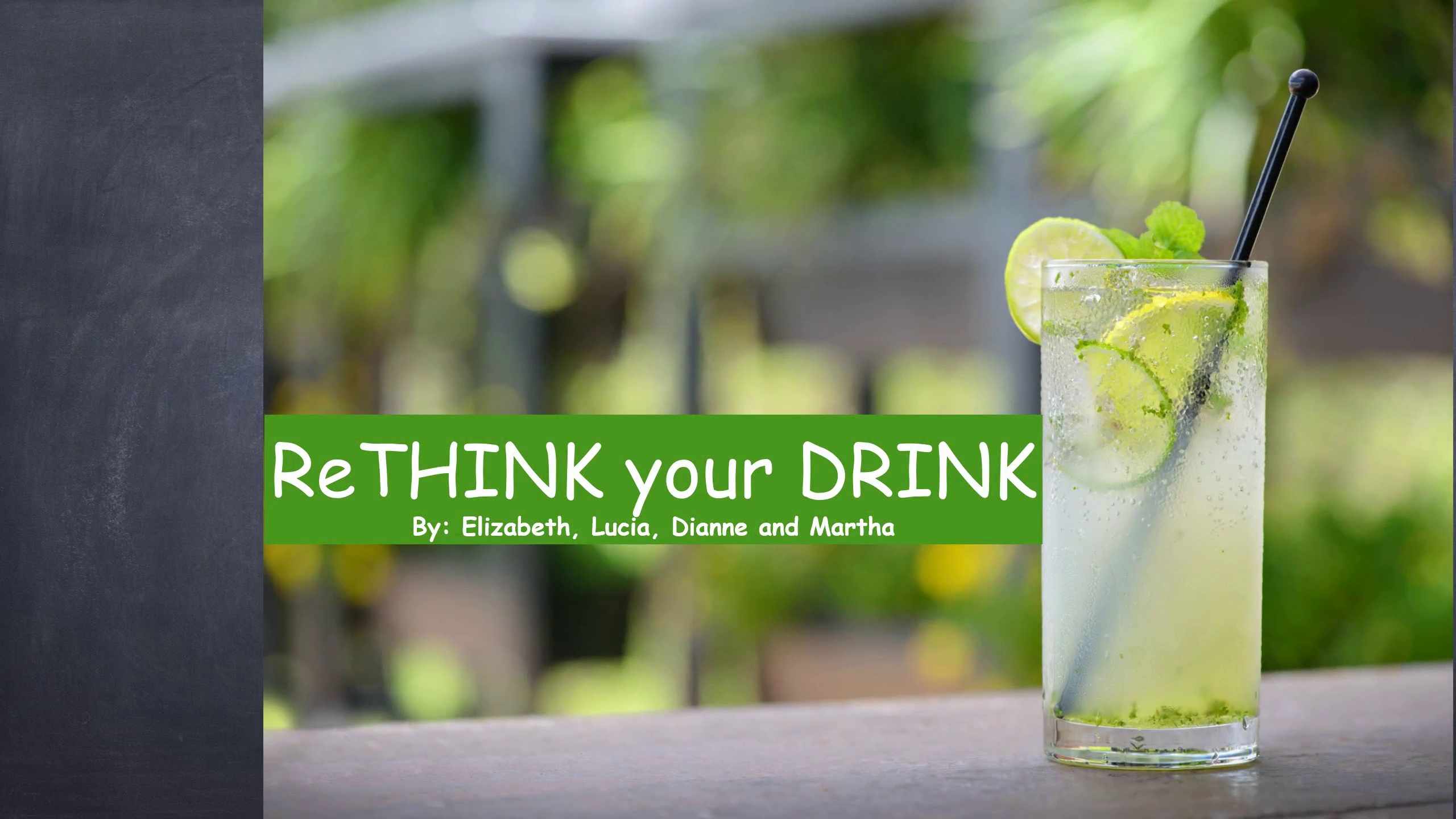
ReTHINK your DRINK By: Elizabeth, Lucia, Dianne and Martha
Scene 1 (0s)
[Audio] Rethink your Drink by: Elizabeth, Lucia, Dianne and Martha.
Scene 2 (9s)
[Audio] What are sugary drinks? According to health food America Sugary drinks include soda, fruit-flavored drinks, flavored water, sports and energy drinks, and sweetened coffee and tea. When sugar is delivered in a liquid form it bypasses the body's defense against consuming too many calories: sugary drinks don't make you feel full. These beverages offer little to no nutritional benefits, and the extra calories and sugar in these drinks outweigh any added vitamins. Sugary drinks have been found to displace healthier foods in the diet. Soda is marketed as an habitual refreshment, rather than an occasional treat, particularly to children, youth, and communities of color.
Scene 3 (58s)
[Audio] --- What is the recommended daily intake of sugar?.
Scene 4 (1m 14s)
[Audio] Sugary drinks are the number one source of added sugars in our diet, representing almost half of all added sugars we consume. Added sugars are a major culprit in the obesity and diabetes epidemics. Availability of these drinks has increased dramatically. In the last 60 years the availability of regular carbonated soft drinks has tripled..
Scene 5 (1m 41s)
[Audio] (find references on the internet) Research about the health risk of sugary drinks ( diabetes, toothdecay).
Scene 6 (2m 4s)
[Audio] Parents believe some sugary drinks are healthy1 in 5 believed sports drinks are "good, healthy drinks for children" One-third believed children need sports drinks for hydration. More than one quarter believed fruit-flavored drinks are somewhat/very healthy Parents are likely to provide children and youth with sugary drinks77% report providing their children with fruit-flavored drinks 62% report providing their children with soda 51% report providing their children with sports drinks.
Scene 7 (2m 42s)
[Audio] Explain the differences of "whoa, slow, go".
Scene 8 (2m 50s)
[Audio] Are you ready to know how much sugar is in your drink? Please watch the video we've made for you..
Scene 9 (2m 59s)
IMG_8989_FctzGZ.mp4.
Scene 10 (9m 46s)
[Audio] What about the diet drinks? Although switching from regular soda to diet soda may save you calories, it's not yet clear if it's effective for preventing obesity and related health problems in the long term. Artificial sweeteners can still add to your calories.
Scene 11 (10m 3s)
[Audio] Examples of slow drinks: unsweetened milk/ skim milk, tea, 100% percent natural juice - slow drinks are ok for a couple of times a week. But don't forget they still have natural sugars, and it still adds up.
Scene 12 (10m 21s)
[Audio] Go drinks are great to have anytime. Your water is the GO drink. If you find boring, you can infuse with lemon, cucumber, mint and a lot more. You can different recipes of water infused drink. Skim milk or low fat milk is a go,.
Scene 13 (10m 42s)
"Make water your drink of choice". According to Canada's food guide, these are some tips to help make water your drink of choice: drink it hot or cold drink water with your meals ask for water with your food when eating out carry a reusable water bottle when you are out.
Scene 14 (10m 59s)
Summary. Beverages often contain empty kcal with few nutrients. A sugar free drink does not mean calorie free drink. It displace nutrient dense food that has more nutrient. ( Grodner et al., 2020) Consider the traffic light for your drink. Red (stop/drink rarely), yellow (drink occasionally) and green (drink often, everyday) Make water your best choice of drink To stay healthy, you have a role to play, choose wisely.
Scene 15 (11m 20s)
[Audio] References. Reference. Grodner , M., Escott-Stump, S., & Dorner, S. (2020). Nutritional foundations and clinical applications: A nursing approach (7th ed.). Elsevier. file:///C:/Users/ owotu /OneDrive/Documents/ACC/Textbook/Nutritional%20Foundations%20and%20Clinical%20Applications%20A%20Nursing%20Approach%20by%20Michele%20Grodner%20EdD%20%20CHES,%20Sylvia%20Escott-Stump%20MA%20%20RD%20%20LDN,%20Suzanne%20Dorner%20MSN%20%20RN%20%20CCRN%20(z- lib.org ).pdf.